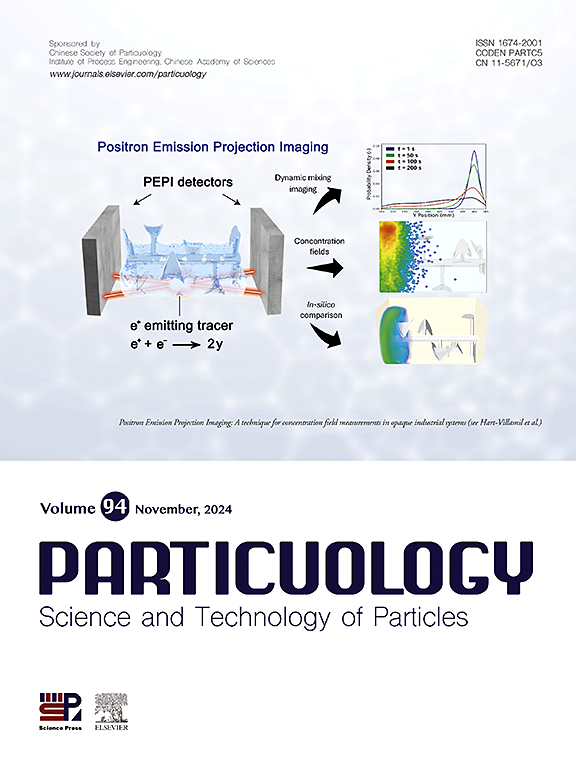Response surface method-based multi-objective optimization of auxiliary air intake in the ash transport tube
IF 4.1
2区 材料科学
Q2 ENGINEERING, CHEMICAL
引用次数: 0
Abstract
Computational particle fluid dynamics (CPFD) approach is used to simulate a horizontal tube with an extra air intake. To determine the optimal values for the two objectives, a one-factor hill-climbing test is performed on three structural parameters of the auxiliary air intake (intake velocity, intake angle, and distance between two neighboring valves) and two objective values (operating time and power consumption coefficient). In this paper, a multi-objective optimization of the three structural parameters has been carried out using the response surface methodology and designing a multi-group central test. It was discovered that when the main air intake speed was 3 m/s, adding an auxiliary air intake with an intake speed of 5 m/s, an intake angle of 45°, and a distance of 1900 mm between the two adjoining valves improved particle evacuation. When compared to the situation with a main air intake speed of 5 m/s and no auxiliary air intake, the working time is reduced by 4.97%, and the power consumption coefficient is reduced by 33.51%.

求助全文
约1分钟内获得全文
求助全文
来源期刊

Particuology
工程技术-材料科学:综合
CiteScore
6.70
自引率
2.90%
发文量
1730
审稿时长
32 days
期刊介绍:
The word ‘particuology’ was coined to parallel the discipline for the science and technology of particles.
Particuology is an interdisciplinary journal that publishes frontier research articles and critical reviews on the discovery, formulation and engineering of particulate materials, processes and systems. It especially welcomes contributions utilising advanced theoretical, modelling and measurement methods to enable the discovery and creation of new particulate materials, and the manufacturing of functional particulate-based products, such as sensors.
Papers are handled by Thematic Editors who oversee contributions from specific subject fields. These fields are classified into: Particle Synthesis and Modification; Particle Characterization and Measurement; Granular Systems and Bulk Solids Technology; Fluidization and Particle-Fluid Systems; Aerosols; and Applications of Particle Technology.
Key topics concerning the creation and processing of particulates include:
-Modelling and simulation of particle formation, collective behaviour of particles and systems for particle production over a broad spectrum of length scales
-Mining of experimental data for particle synthesis and surface properties to facilitate the creation of new materials and processes
-Particle design and preparation including controlled response and sensing functionalities in formation, delivery systems and biological systems, etc.
-Experimental and computational methods for visualization and analysis of particulate system.
These topics are broadly relevant to the production of materials, pharmaceuticals and food, and to the conversion of energy resources to fuels and protection of the environment.
 求助内容:
求助内容: 应助结果提醒方式:
应助结果提醒方式:


